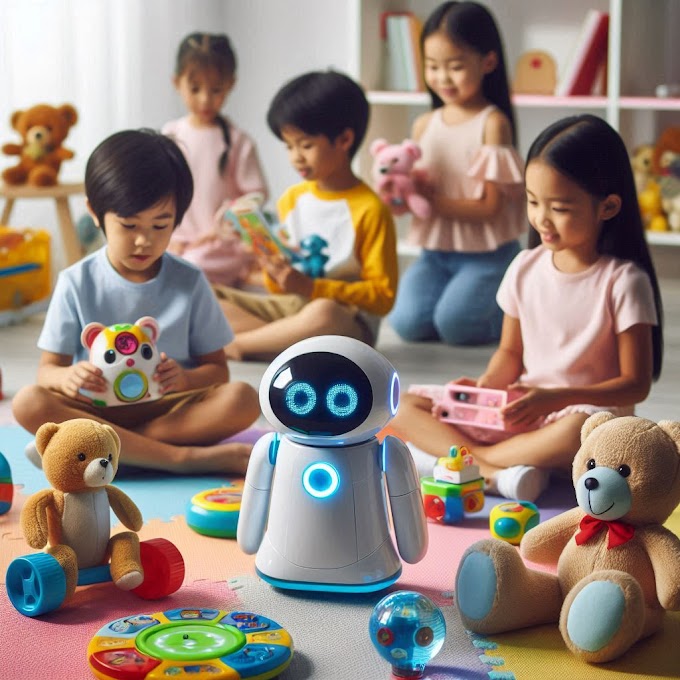The Internet of Things (IoT) is a network of physical devices, vehicles, buildings, and other items embedded with sensors, software, and connectivity which enables these objects to connect and exchange data. IoT has the potential to revolutionize many industries by increasing efficiency, productivity, and reducing costs. For example, in the manufacturing industry, IoT can be used to improve supply chain management, monitor equipment performance, and optimize production processes. In the transportation industry, IoT can be used to improve traffic flow and reduce accidents by connecting vehicles and infrastructure. In the healthcare industry, IoT can be used to remotely monitor patients and improve the efficiency of care delivery. Overall, IoT has the potential to drive significant economic growth and improve the quality of life for people around the world.
The Internet of Things (IoT) is a rapidly growing network of physical devices, vehicles, buildings, and other items embedded with sensors, software, and connectivity which enables these objects to connect and exchange data. IoT has the potential to revolutionize many industries by increasing efficiency, productivity, and reducing costs. In this article, we will explore how IoT is impacting the manufacturing, transportation, healthcare, and other industries.
Manufacturing Industry
IoT is transforming the manufacturing industry by improving supply chain management, monitoring equipment performance, and optimizing production processes. By connecting machines and devices in the factory, manufacturers can collect and analyze data in real-time, allowing them to make informed decisions and improve the overall efficiency of their operations. For example, GE Appliances, a Haier company, has implemented IoT in their manufacturing facilities to improve production efficiency and reduce costs. By connecting their machines and devices, they were able to increase production by 30% and reduce downtime by 50%.
Transportation Industry
IoT is also having a significant impact on the transportation industry by improving traffic flow and reducing accidents. In smart cities, connected vehicles and infrastructure can communicate with each other to optimize traffic flow and reduce congestion. Additionally, by connecting vehicles and infrastructure, IoT can improve safety by providing real-time information on traffic conditions, weather, and potential hazards. For example, the city of Barcelona has implemented a system of connected sensors and cameras to improve traffic flow and reduce accidents.
Healthcare Industry
IoT is also revolutionizing the healthcare industry by improving patient care and efficiency of care delivery. By connecting medical devices and collecting data from patients, healthcare providers can monitor patients remotely and make informed decisions about their care. Additionally, telemedicine, which allows patients to consult with doctors remotely, is becoming increasingly popular due to IoT. For example, Medtronic, a medical device company, has developed a remote monitoring system for patients with diabetes which allows them to collect data from their insulin pump and glucose monitor and share it with their healthcare providers.
Other Industries
IoT is also impacting other industries such as agriculture, retail, and energy. In agriculture, IoT can be used to improve crop yields and reduce water usage by collecting data on weather, soil conditions, and water levels. In retail, IoT can be used to improve the customer experience by tracking foot traffic and inventory in real-time. In the energy industry, IoT can be used to improve the efficiency of power generation and distribution by connecting devices and collecting data.
Challenges and Opportunities
While IoT has the potential to revolutionize many industries, there are also challenges in implementing and scaling IoT solutions. Security concerns, lack of standardization, and the high cost of implementation are some of the challenges facing the IoT industry. Additionally, as the number of connected devices continues to grow, there is a need for robust and secure networks to handle the increased data traffic.
Despite these challenges, the potential for future growth and development in IoT is immense. As more and more devices become connected, the opportunities for innovation and new business models will continue to grow. Companies that are able to effectively leverage IoT will have a significant competitive advantage in their respective industries.
Conclusion
The Internet of Things is revolutionizing many industries by increasing efficiency, productivity, and reducing costs. From manufacturing and transportation to healthcare and other industries, IoT is driving significant economic growth and improving the quality of life for people around the world. While there are challenges in implementing and scaling IoT solutions, the opportunities for future growth and development are immense. As more and more devices become connected, the potential for innovation and new business models will continue to grow. Companies that are able to effectively leverage IoT will have a significant competitive advantage in their respective industries.
As IoT continues to evolve and more devices become connected, the impact on industries will continue to grow. For example, in the manufacturing industry, IoT will enable companies to achieve Industry 4.0 and reach new levels of automation and efficiency. In the transportation industry, IoT will lead to the development of autonomous vehicles, which will improve safety and reduce traffic congestion. In the healthcare industry, IoT will continue to improve patient care and reduce costs.
In conclusion, IoT is transforming many industries and will continue to do so in the future. With the increasing number of connected devices and the growing amount of data, IoT will lead to new opportunities for innovation and business models. Companies that invest in IoT today will be well-positioned for future growth and success in their respective industries.
















0 Comments